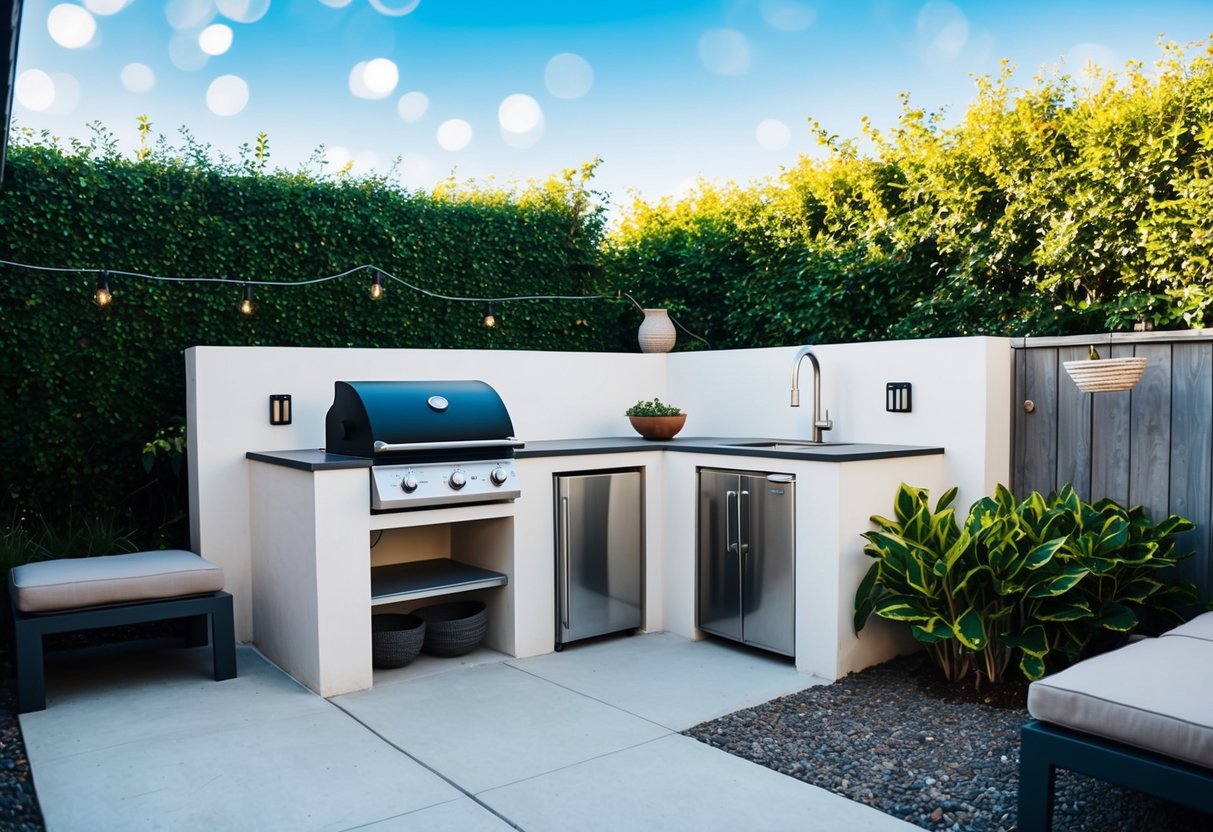
Cleaning and Maintenance
Keeping an outdoor kitchen clean and well-maintained ensures longevity and remains a welcoming space for gatherings. Regular cleaning of the outdoor sink and maintaining water supplies keep functionality intact. It’s equally crucial to choose materials that withstand outdoor conditions and follow appropriate cleaning protocols.
Outdoor Sink and Water Supply
The outdoor sink serves as a central element in the kitchen, facilitating cleaning and food preparation. Regular cleaning prevents bacteria build-up and water supply issues. It is essential to turn off water when not in use to avoid leakage and possible water damage. Stainless steel sinks are typically easy to clean and resistant to corrosion, perfect for outdoor settings.
Regular inspection of faucets and pipes can help prevent leaks, while flushing the system can eliminate any build-up of dirt or debris. If the water supply uses hoses, consider using ones designed for potable water to ensure quality. This approach not only maintains hygiene but also enhances the performance of the entire outdoor kitchen.
Materials and Protocols
Choosing the right materials for the outdoor kitchen components can significantly affect maintenance routines. Opt for weather-resistant materials like stainless steel or treated wood for cabinets and countertops. These materials require less frequent maintenance and offer durability against the elements. Wind or rain can occasionally bring dirt or debris; wiping surfaces regularly helps maintain cleanliness.
Cleaning protocols should be straightforward but thorough. Use mild soap and water for regular cleaning of surfaces, avoiding harsh chemicals that could degrade the material over time. Regular oiling of wooden elements and resealing of other surfaces might be needed to protect against moisture absorption and sun exposure. Attention to these details ensures long-lasting functionality and appearance.
Landscaping and Decor
Incorporating a stylish outdoor kitchen involves thoughtful attention to its environment. Seamlessly blending the kitchen with existing garden aesthetics and ensuring comfort through purposeful lighting and furniture are key considerations.
Integrating into Your Garden
Designing an outdoor kitchen that complements the garden enhances the overall appeal of the space. Choosing materials that mimic natural elements, like wood and stone, can create a harmonious look. It’s beneficial to consider the existing plant life; placing the kitchen near fragrant herbs or flowers can enhance the dining experience.
Pathways can guide guests from garden to kitchen, creating a sense of flow. Using similar materials for both the pathways and the kitchen can ensure consistency. Low-maintenance plants around the kitchen, such as succulents or ornamental grasses, can provide greenery without significant upkeep.
Lighting and Furniture
Appropriate lighting extends the usability of an outdoor kitchen into the evening. Solar-powered lights along pathways not only save energy but also improve safety. String lights or lanterns can add ambiance, making the space cozy and inviting.
Selecting suitable furniture is crucial for comfort and style. Weather-resistant materials, like metal or treated hardwood, ensure durability. Comfortable seating encourages relaxation and enjoyment, while a simple dining set can accommodate meals. Arranging furniture to take advantage of garden views enriches the dining experience, creating a compelling blend of form and function.